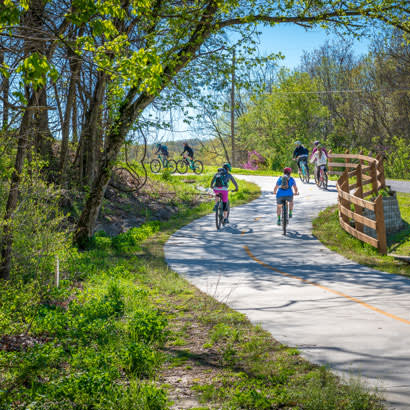
Welcome back to our Park Engagement Blog Series! As a reminder, this blog series is based on the 2023 Engagement With Parks Report, an annual report (starting in 2016) of 1,000 U.S. adults surveyed on questions ranging from frequency of park usage to parks and recreation as a component of local government and more.
With this data, park and recreation professionals can gain insight into how to best provide the public with the facilities and programming that they most need and desire. You can learn more about the history of the Engagement With Parks Report in the first blog post in our series here.
Today, we are discussing how people get to their local parks. Our survey asked known park users how they get from their homes to parks, playgrounds, open spaces or recreation centers with seven options to select from:
- Drive
- Walk
- Bike
- Jog or run
- Public transit
- Taxi/rideshare
- Rollerblade, skateboard or scooter
- Other
Out of all these different modes of transportation, driving and walking seem to be the most popular, having consistently higher percentages between the years of 2018 and 2023. While driving gets a percentage of responses in the high 50s and low 60s, and walking gets responses in the high 40s and low 50s, all other forms of transportation do not surpass 22 percent.
However, despite driving continuing to be the most popular mode of transportation to parks, its numbers are dwindling. In 2018, 69 percent of survey respondents selected driving as one method of getting from home to parks, playgrounds, open spaces and recreation centers. Since then, driving has not surpassed this percentage and has mostly decreased. Now, in 2023, 59 percent of survey respondents list driving as their preferred mode of transportation to parks — a 10 percent decrease from just five years ago.
What’s even more interesting is that other forms of transportation — specifically jogging or running, public transit, and taxis/rideshare — have become more popular between 2018 and 2023. In 2018, 12 percent of survey participants responded that jogging or running was one method they used to get from their homes to parks. This percentage has increased to 17 percent in 2023.
Five years ago, 4 percent of survey-goers said that taxi/rideshare was their preferred mode of transportation to their parks and recreation facilities This has increased by 6 percent (to one in 10 U.S. adults or their families using this method) in 2023. Further, 7 percent of respondents in 2018 used public transit such as buses, trains and subways to get to their local parks and recreation. Now, in 2023, 14 percent of survey respondents choose this option.
Despite these shifts in popularity, walking has remained consistent, with percentages that only vary slightly between 2018 and 2023. Forty-nine percent of survey participants listed walking as a method of transportation to parks and recreation facilities in 2018, 2020, and currently, in 2023. In addition to walking, other active modes of getting to parks in 2023 include biking (22 percent); jogging or running (17 percent); and rollerblading/skateboarding/scootering (8 percent).
The data above has essentially revealed three things to us. For one, it reveals that despite driving still being the most popular form of transportation to parks and recreation facilities, its popularity has been diminishing over the years. Furthermore, we can see that with the decrease in driving to parks, there has been an increase in the use of other modes of transportation, such as jogging and running, taking taxis, and using public transit. However, regardless of these shifting statistics, walking has remained a steady form of transportation to local parks and recreation spaces for the past five years. This could be a result of the number of U.S. adults who live within walking distance of a park or other recreation opportunity, but that is a topic for another day...
Catherine Tepper (she/her) is a research assistant at NRPA.


